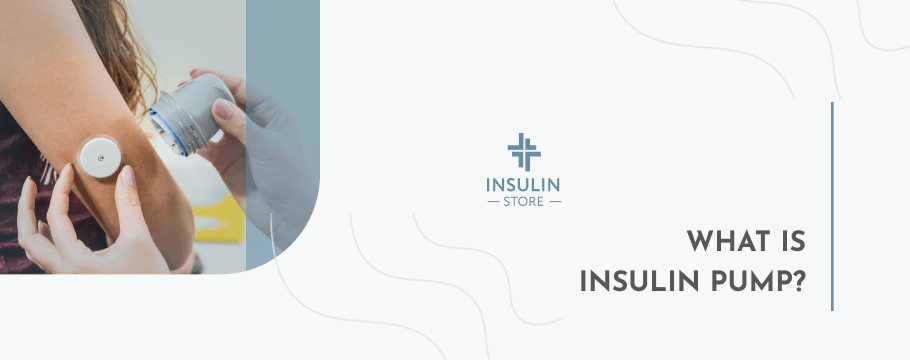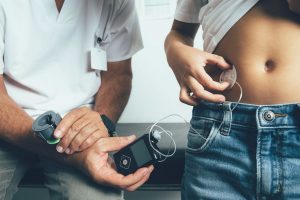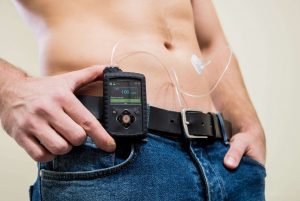
Insulin Pump: What It Is & How Does It Work?
Today, diabetes mellitus ranks third in prevalence worldwide and second in mortality due to the development of severe complications that necessarily accompany this disease if not treated appropriately. That is why there is such a variety of medications for injections for continuous glucose monitor. Currently, there are syringes, pens, cartridges, and insulin pumps for blood sugar control.
The problem with the first three options is that people with diabetes need regular injections, and a syringe or insulin pen may be uncomfortable in traveling, at work, and in other public places. For these and other cases, you may consider using an insulin pump. Wondering what is that and how it works to control blood glucose levels? Stay with us and keep on reading!!!
WHAT IS AN INSULIN PUMP?
Insulin pump therapy is an alternative to multiple daily injections of insulin. A diabetic patient wears a small device that injects insulin into the body. Accurate insulin doses and personalized settings help keep blood sugar levels within the target range. Insulin pump therapy has many benefits, such as lower HbA1c levels and more freedom in daily life1,2.
An insulin pump itself is a small electronic insertion device that delivers insulin according to pre-programmed personal settings. An insulin pump is recommended for patients with type 1 diabetes and type 2 diabetes mellitus undergoing insulin therapy.
An insulin pump allows you to simulate the work of the pancreas in a healthy person. Unlike the multiple daily injection method, the pump uses only one insulin, either short or ultra short-acting. Continuous subcutaneous insulin infusion eliminates the need for frequent injections. Fast-acting insulin is injected in precise doses always at the same time of the day, precisely meeting the needs of the body.
Your insulin pump can be disconnected while you are watering or doing active sports. The rest of the time, it can be worn on a trouser belt, in a pocket, in a special case, or on a belt.
HOW DO INSULIN PUMPS WORK?
The pump delivers insulin in two modes: basal and bolus.
Basal mode. Insulin is injected continuously in small doses at a programmed basal rate, simulating the process of insulin secretion by the pancreas of a healthy person (not counting periods of food intake). During the day, you can select up to 48 different basal rates (for every 30 minutes), taking into account the individual needs of the body during the day, at night, and during physical activity. The basal rate is determined by the doctor based on the individual characteristics of the patient. The basal rate can be adjusted to reflect changes in the daily routine: insulin delivery can be temporarily suspended, increased, or decreased. This is an important benefit that is not available with extended insulin injections.
Bolus. Bolus insulin should be given at meals or to correct high blood sugar levels. All insulin pumps are equipped with the Bolus Wizard, a special calculator that allows you to calculate the required bolus dose based on your individual settings.
BENEFITS OF USING AN INSULIN PUMP
Insulin pump therapy has many advantages over multiple daily injections, including:
- Better control of HbA1c levels;
- Reducing the number of episodes of hypoglycemia;
- Decrease in glycemic variability.
The pump allows you to customize your insulin delivery to fit the lifestyle and needs of each patient. Insulin pump therapy provides better diabetes control, freedom, and comfort.
MECHANISM OF OPERATION OF THE INSULIN PUMP. HOW DOES INSULIN GET INTO THE BODY?
Your insulin pump has a compartment for the insulin reservoir, from which insulin is injected into the body using an infusion set. Installation of the infusion set is performed using a special device for the introduction of the infusion set a serter. The insulin itself is injected through a small flexible tube (cannula) located under the skin. The infusion set is connected to the reservoir using small tubing that can be detached as needed (for example, when swimming, showering, or playing sports).
INDICATIONS FOR PUMP INSULIN THERAPY
- Disorder of carbohydrate metabolism requiring the administration of insulin (any type of diabetes mellitus);
- Unsatisfactory results of treatment with traditional remedies;
- Pregnancy planning;
- Children’s age – the pump can be used by patients of any age;
- Patient’s desire
- Duration of diabetes does not matter when deciding whether to use your pump.
A modern insulin pump is lightweight, pager-sized. Insulin is delivered to the body through a system of flexible, thin tubes. They link the insulin reservoir inside the device to the subcutaneous fat.
Insulin pumps work close to the functioning of the human pancreas. That is, insulin is administered in two modes – bolus and basal. It was found that the rate of basal insulin secretion by the pancreas differs depending on the time of day.
ADDITIONAL FEATURES OF INSULIN PUMPS
Modern pumps have a number of useful additional options thanks to digital developments:
- Residual insulin in the bloodstream;
- Bolus calculator;
- Alarms (missed bolus, hypo-, or hyperglycemia);
- Integration with a blood glucose meter (built-in, remote data transmission);
- Synchronization with PCs, smartphones, tablets;
- Remote control;
- Using an infusion pump instead of tubing.
INSULIN PUMP COMPONENTS
All infusion sets and reservoirs form a complete insulin pump system using a specially designed unique interface that is more reliable than a standard connection. The heart of the system is the patented, unique connection that comes with every infusion set.
1.Insulin pump
A small electronic device that contains the following elements:
- Buttons for programming the insulin dose and navigating menus;
- LCD screen showing the programming process
- Compartment for 1 AA alkaline battery
- Tank compartment.
2.Reservoir
A plastic insulin cartridge that stores the drug and is inserted into your insulin pump. The reservoir is equipped with a special plunger (a blue component that is located at the top of the reservoir and is removed before inserting the reservoir into the insulin pump), which is used to fill the reservoir from an insulin ampoule or pen. The reservoir has a maximum volume of 300 and needs to be changed every 2-3 days as the infusion set is changed. The special design of MiniMed tanks makes filling insulin as easy and convenient as possible.
3.Infusion set
One of the components of an infusion set is a thin tube that connects the reservoir and your preferred infusion site on your body. The cannula is inserted with a small needle, which is then withdrawn from the body, and the infusion sites correspond to the places on the body where standard insulin injections are usually given. The frequency of changing the infusion set is every two to three days. MiniMed kits are available in a wide range and have a variety of characteristics (type of cannula, tube length, angle of inclination). You can choose the exact infusion set that will provide you with maximum comfort and protection.
4. Device for the introduction of the infusion set
To install the infusion set, a special device is used, a serter. Just one push of a button and the infusion set is set up quickly, easy, and virtually painless.
TYPES OF INSULIN PUMPS
On the market, you can find two basic types of insulin pumps: the traditional one and moe advanced and modern insulin patch pumps. Let us examine them in more detail.
Traditional insulin pumps. This type of device for insulin delivery consists of an insulin pump, reservoir, infusion set, and tubing. We will speak on each of the parts later in this article.
Insulin patch pump. This device is worn directly on the body and has a separate infusion set that can be carried in your pocket and is not linked to the patch. Thus, it is more comfortable and so evident for the other people that you have diabetes.
INSTALLATION LOCATIONS OF INFUSION SYSTEMS
- Front, front-side, back-side surfaces of the abdomen;
- Lateral thighs;
- Lateral surfaces of the buttocks;
- Lateral surfaces of the shoulders.
Insulin pumps are filled with any short-acting insulin. It is better to use the ultra-short NovoRapid, Humalog, Apidra. This supply will last for several days before you have to refill the tank.
FREQUENT QUESTIONS ANSWERED
Are there any contraindications for installing an insulin pump?
Yes, there is. This is a pronounced decrease in vision (blindness), the impossibility of self-control (measuring blood sugar at least 4 times a day), unwillingness to take into account bread units, intellectual decline. The presence of inflammatory/allergic diseases of the skin of the abdomen and other places of injection of the infusion set is also a contraindication.
Do I need to use a pen when wearing a pump?
A pen with short-acting insulin should always be available (like an ambulance) due to the possibility of unforeseen situations – the battery in the pump has run down, the cannula is clogged, the pump has broken down. During normal operation, the pump replaces the injection of insulin with syringe pens completely.
How often are consumables changed?
The cannula lasts 3-4 days. Then, due to its small diameter, it clogs up, insulin stops flowing in the required amount. The reservoir and catheter can be used for 7-10 days. The infusion set (needle + catheter) is also changed after 3-4 days, as the cannula becomes clogged.
FINAL WORD
Diabetes is a dangerous disease. One of its greatest dangers is that the patient needs constantly monitor his/her lifestyle, diabetes menu, control glucose levels, and receive a timely amount of insulin. To ease the life of patients with diabetes, doctors and scientists are constantly working on developing new and more effective types of insulins and different devices for continuous glucose control. Insulin pumps and patch pump are some of the available options. How to know whether it is right for you? Of course, you will need to consult with your doctor or diabetes care team and try out how it matches your lifestyle. You never know until you try. Remember that on Insulin.Store you can buy any type of insulin medication for syringe injections, insulin cartridge, insulin pen, or insulin pumps at the most affordable and attractive prices. Contact our team for more information.


